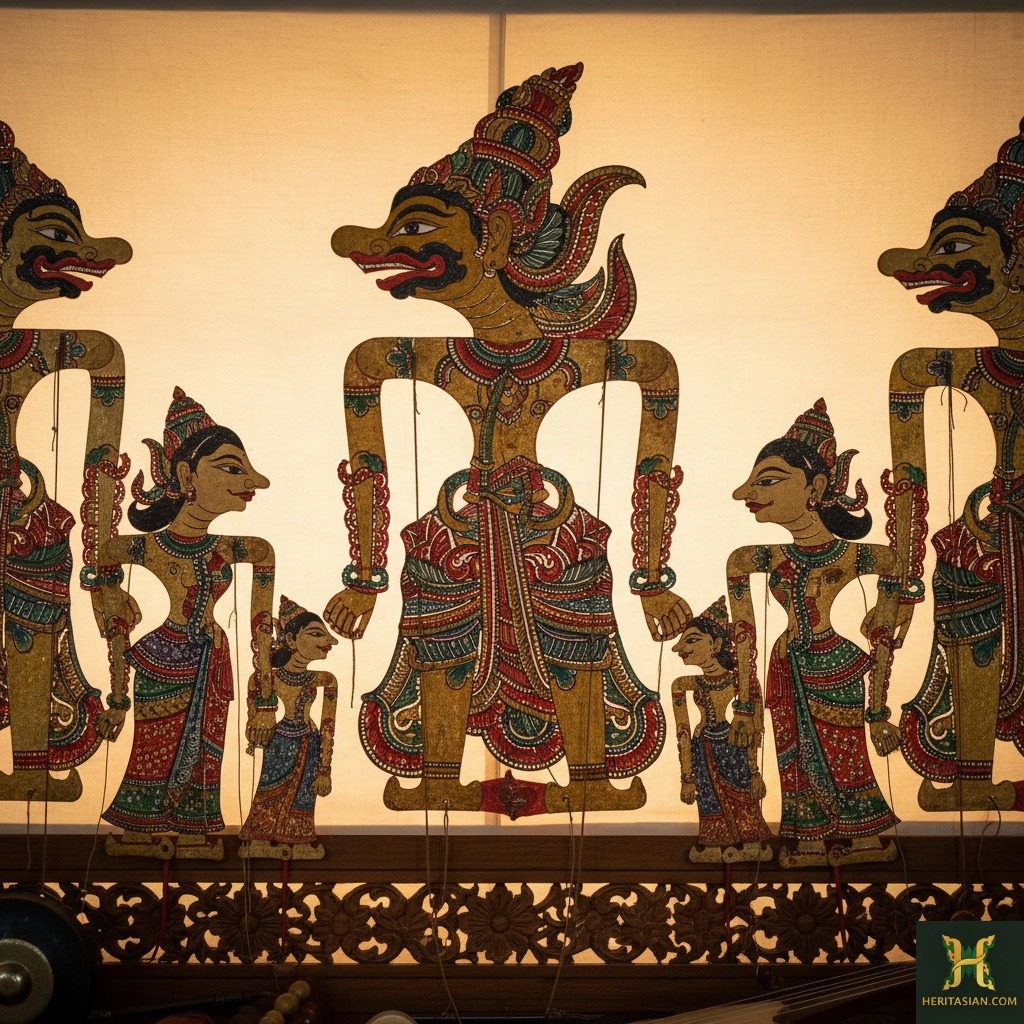Malaysia’s heritage is made up of a diverse mix of people and cultures. From the early Hindu-Buddhist kingdom of the Bujang Valley, there has been a strong tradition of maritime trade in this country. Malaysia’s blend of traditions is one that the history lover or foodie traveller is going to find simply irresistible.
For those of us who seek more than just a typical beach holiday, Malaysia has so much to offer. Whether you’re enthralled with the colonial era, the spice trade, or ancient civilisations, Malaysia can be an exciting journey through time.
Islamic Malaysia Heritage
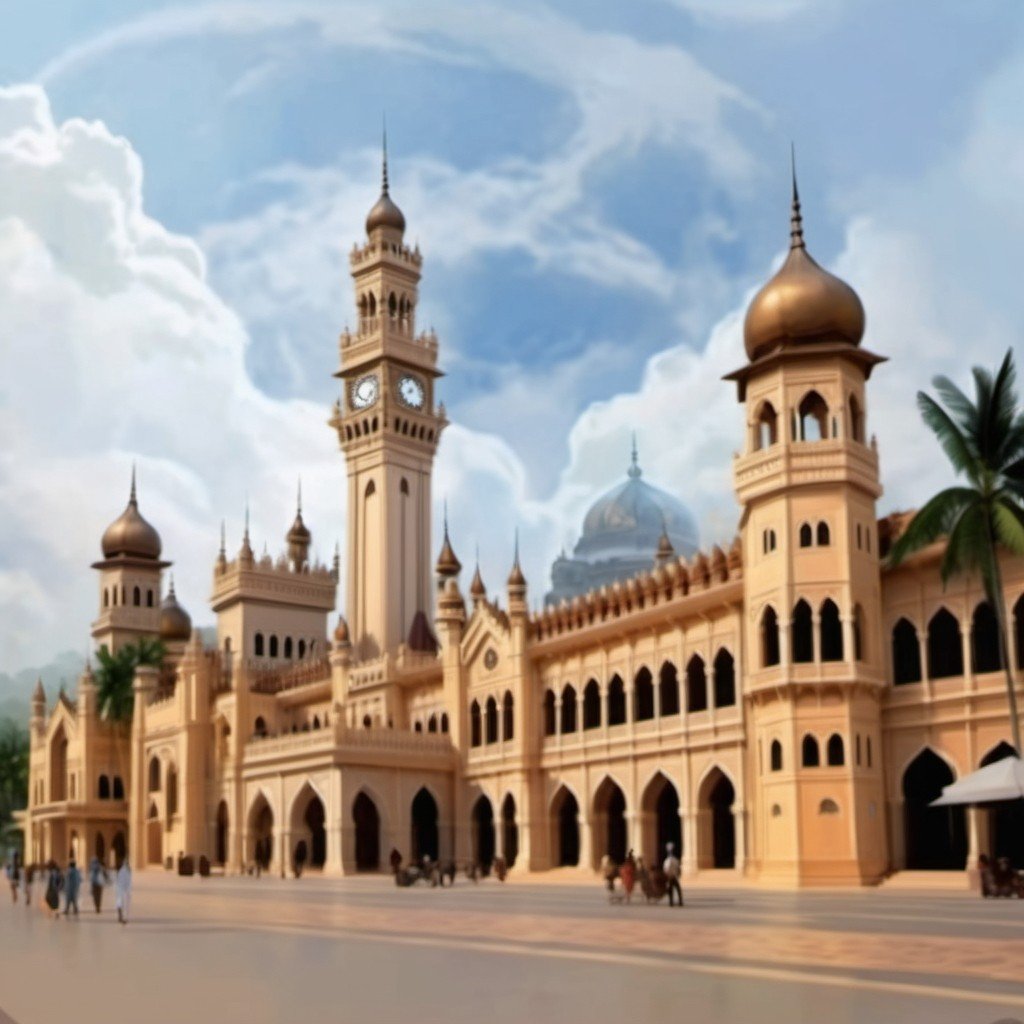
We don’t know for sure when Islam first arrived on the Malay Peninsula. Some historians have suggested as early as the 7th century, while others, more conservative in their estimates, place it in the 12th century. Regardless of the exact date, it’s clear that Islam had a major impact on the region.
One of the key figures in the spread of Islam was Sultan Mudzafar Shah I of Kedah, the first Malay ruler to convert from Hinduism. His conversion marked a sturning point in the country’s history.
The influx of Islamic traders exposed locals to the word of Islam. The faith’s emphasis on social justice, spiritual purity, and divine guidance resonated with the Malay people. Sharia law, a comprehensive legal system, provided a desperately needed framework for governance in those early days of Melaka.
Sufis Spread the Word
With their mystical approach, Sufi missionaries spread the faith across the Malay Peninsula. Teachings, encouraging a personal and direct experience of the divine, appealed to a population with already deep-rooted spirituality.
From a pragmatic perspective, adopting Islam was a savvy move for the Melaka rulers. It forged political and economic links with the powerful Islamic world overseas. But unlike the rapid spread of Islam through Arabia and even North Africa, it wasn’t a sudden affair. It was gradual, taking centuries to fully embed itself within Malay society.
Islam in Malaysia is evident in its stunning mosques, Islamic art, and traditional clothing. The rich literary tradition, both historical and contemporary, is yet more proof of the profound influence of Islam on Malay culture.
Chinese Influences on Malaysian Heritage
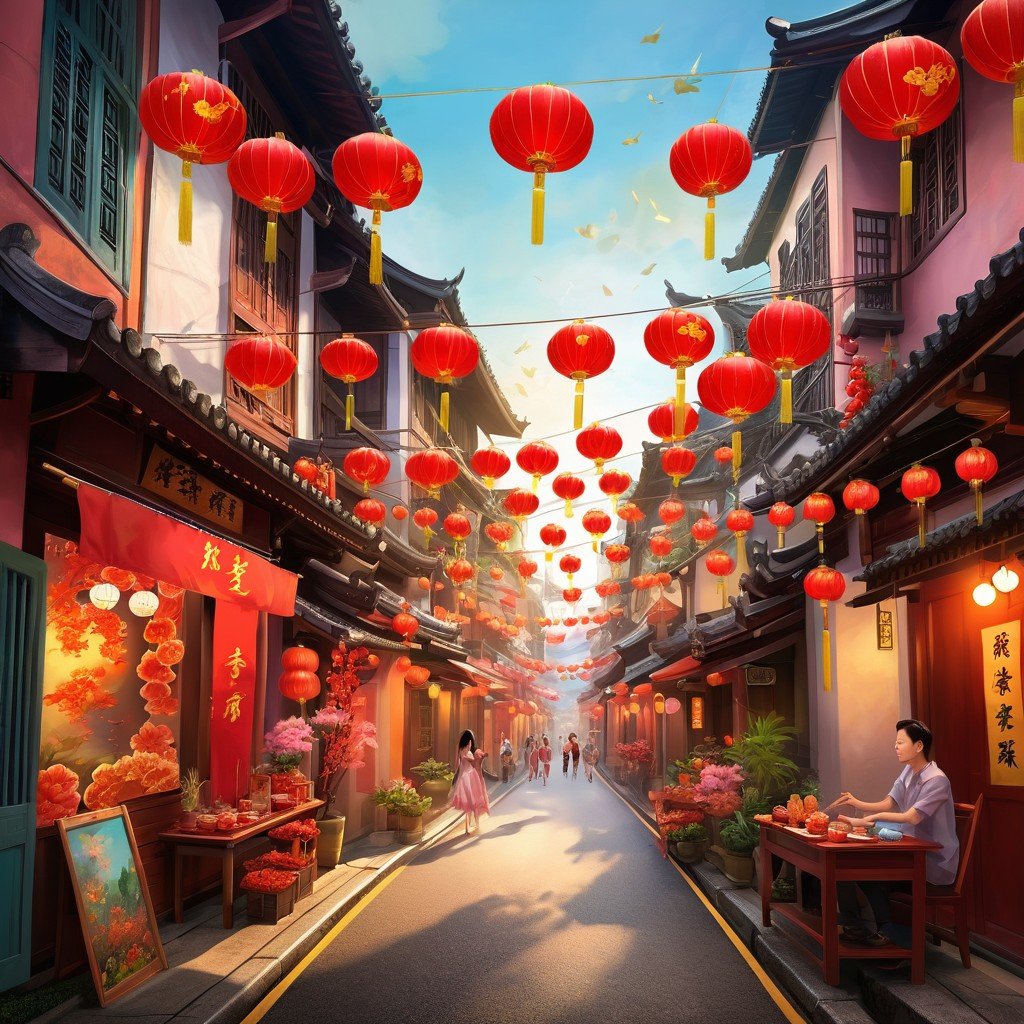
The seafaring Chinese had long before been trading up and down the coastline of Malaya. Both the Han (202 BC – 220 AD) and Song (970-1279) dynasties document such trips.
Early Chinese settlers are said to have made parts of Borneo their new home. But it was during the Ming Dynasty (1368-1644) under the reign of Emperor Zhu Di that Chinese influence in the region grew. Under the Chinese emperor’s name, the legendary Chinese Admiral Zheng He led expeditions to Southeast Asia and beyond. His voyages, driven by diplomacy and trade, brought the first Chinese settlers to the area en masse.
Among these settlers were artisans, traders, diplomats, and even deserters. They came from southern coastal China, particularly the Fukien and Cantonese coastal areas. And they brought with them maritime expertise and southern Chinese traditions.
Over time, these immigrants intermarried with the local Malay population. This gave rise to a unique hybrid group known as the Peranakan Chinese, or Baba Nyonya. This culture, an exotic mix of Chinese and Malay, continues to enrich the heritage of Melaka to this day.
Emperor Zhu Di Dies
With the death of outward-looking Zhu Di, domestic politics put an end to China’s age of exploration. Grand expeditions cost money. And with severe internal troubles, the Chinese no longer had the taste for overseas adventures.
In a fit of isolationism, the Middle Kingdom slammed the door on the outside world, forbidding its citizens from overseas travel. Many who’d settled abroad were forced to return. Others, more adventurous or desperate, chose to remain in their new homeland.
For centuries, only merchants, pirates, and those seeking refuge from events back home landed on Malaysia’s shores. And so it wasn’t until the British colonial era that a larger wave of migration began. Drawn to the tin mines and rubber plantations, thousands of labourers arrived, changing the demographics of this region forever.
Penang Eclipses Melaka
Under the British, Penang eclipsed Melaka as a trading port. And it soon became a magnet for Chinese immigrants. They brought with them a mosaic of dialects: Cantonese, Hakka, Hokkien and Teochew. But it was Hokkien, the language of Fujian province, that emerged as the lingua franca of the Chinese diaspora.
Over time, these dialects evolved, absorbing local Malay words and creating a patois reflecting their new cultural identity. Despite the challenges of adapting to a new land. These immigrants clung to their traditional celebrations. And now, after centuries, these celebrations are very much part of Malaysia’s cultural heritage.
Indian Influence on Malaysian Heritage
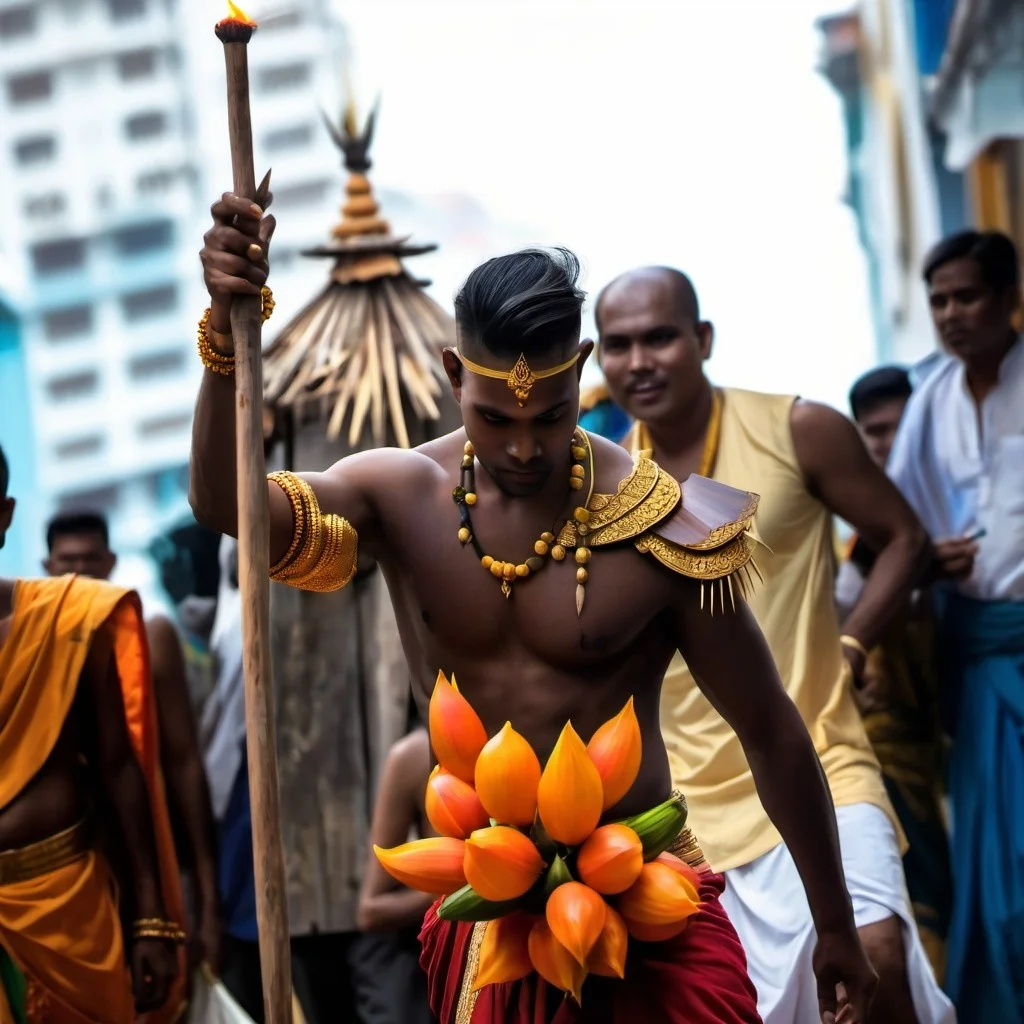
The empires of the Cholas and Pallavas, with their maritime prowess, left their footprint on early Malay Kingdoms. The spread of Hinduism and Buddhism, carried by traders and monks, deepened the ties between the two regions in the form of the Srivijaya, Funan, and Dvaravati Kingdoms.
However, the British era marked a new chapter. The thirst of the East India Company for spices and textiles led to the setting up of trading posts all across Southeast Asia. To meet the demands, the company recruited Indian labourers from Tamil Nadu and Andhra Pradesh. These hardworking immigrants formed the backbone of the region’s rubber and palm oil plantations.
Indian Migration in Large Numbers
Alongside labourers came other Indian migrants: Punjabi Sikh soldiers, serving in the British Indian Army, brought their military skills. North Indian traders drawn by the opportunities of the colonial era set up in Penang and later Singapore.
The impact of these diverse groups cannot be understated. Indian celebrations have become an important part of modern-day Malaysian heritage. Colourful celebrations of Deepavali, the rhythmic beats of bhangra, and the flavours of Indian cuisine all add an extra dimension to this fascinating country.
As the British Raj waned and as Singapore emerged, the Indian diaspora continued to flourish. Indian-owned businesses, professional organisations, and cultural institutions played a major part in the economic and social development of Indian Malaysians to modern times.
Malaysia Heritage and the Evolution of Cuisine
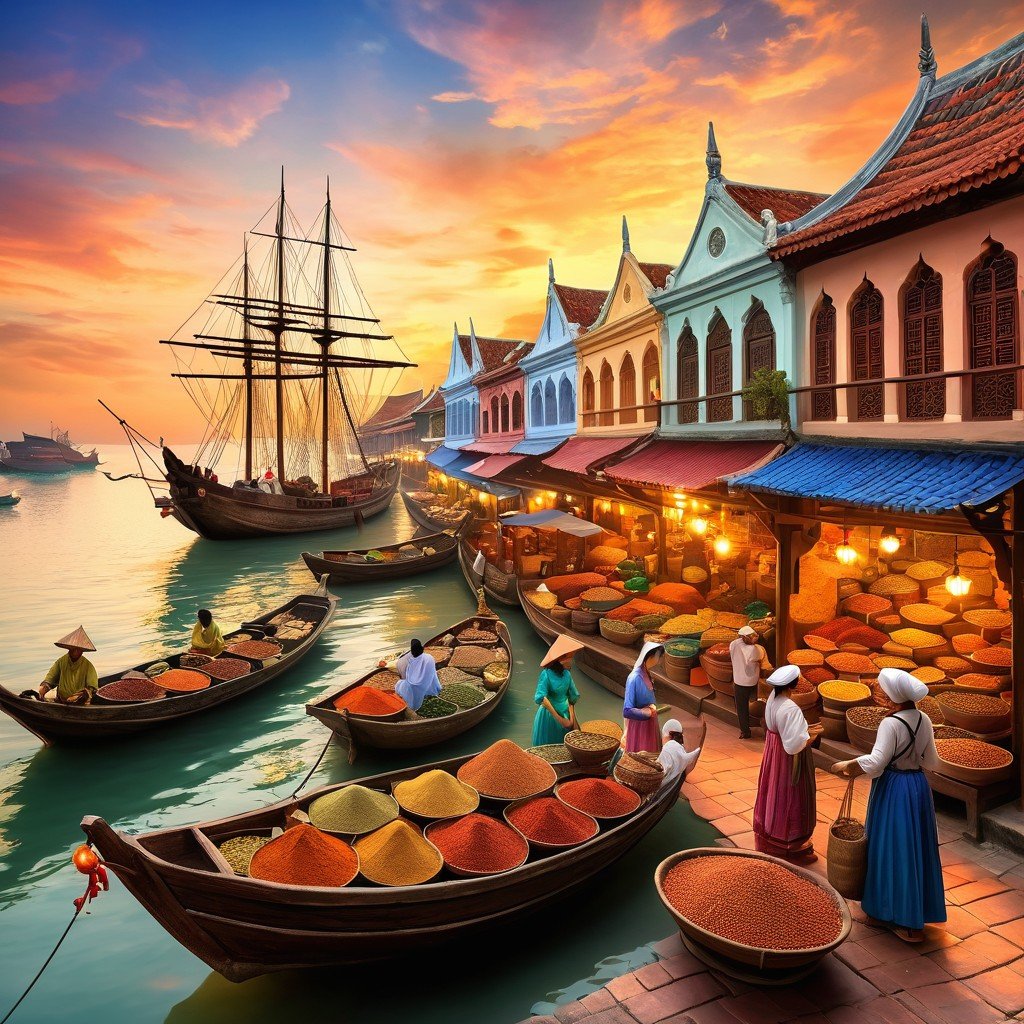
Malaysia’s culinary heritage is a blend of flavours. Melaka, the historic port city, was a melting pot where traders from Arabia, Persia, China, India, and Portugal brought their food traditions. Melaka was, it’s said, once home to 80 different languages spoken in this port city.
All these influences, combined with local ingredients and cooking techniques, gave birth to what is now world-renowned Malaysian cuisine. From the spicy curries of the Malays to the noodles of the Chinese, not forgetting the spices of the Indians, there’s something to satisfy every palate. And then there’s Peranakan food of all groups, Nyonya, Jawi Peranakan and even the Kristang.
A cornerstone of the Malaysian food scene is the lively hawker stall culture. Hawker centres offer a glimpse into the country’s culinary diversity. It’s no wonder that food lovers worldwide are drawn here. The food’s not only delicious but affordable, making it a go-to destination for culinary tourism.
Indian Cuisine in Malaysia
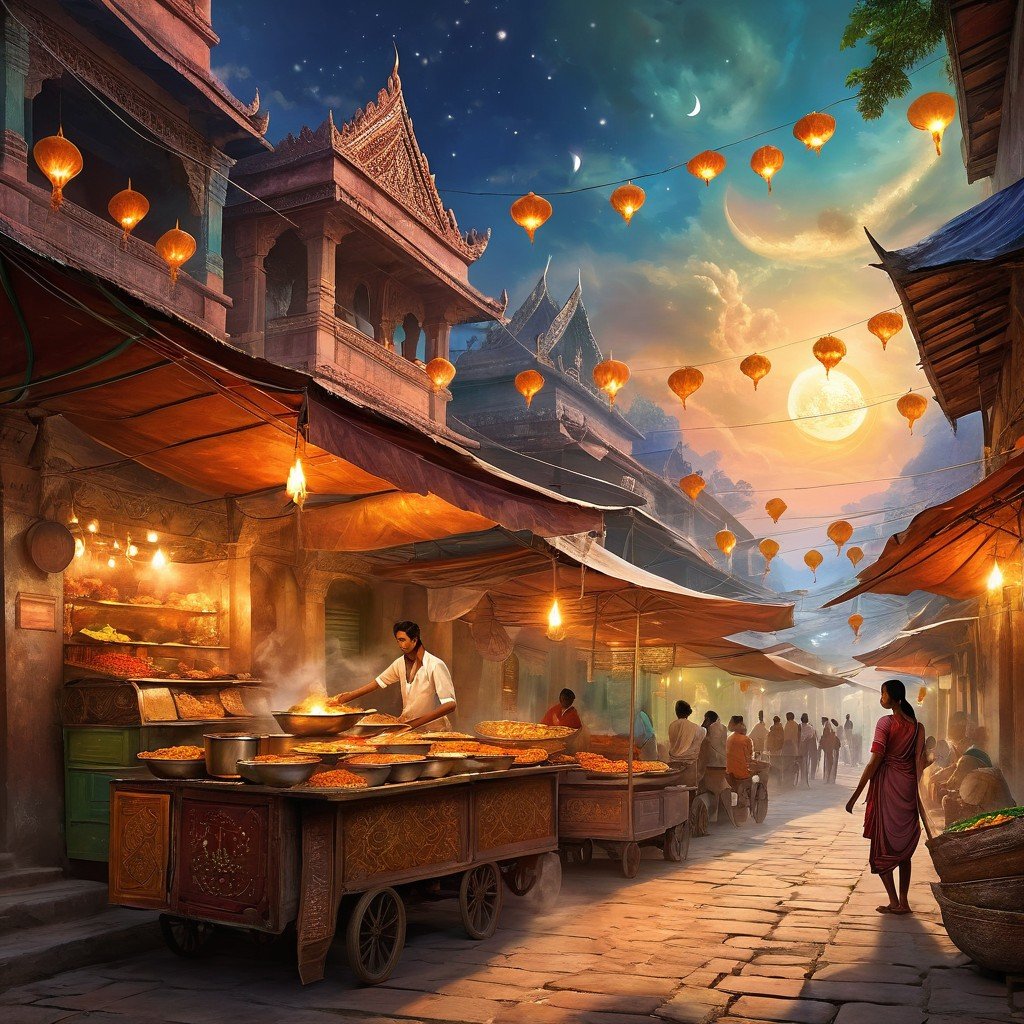
The history of Indian food in Malaysia is as colourful as the dishes themselves. Indian labourers came to the country during the British colonial period. One of the most iconic dishes of Malaysian Indian cuisine is Roti Canai. Most often served with curries, such as dhal or vegetable curry. While many of us would never consider eating curry and bread in our home countries, in Malaysia, it’s the quintessential breakfast. Another popular dish is Nasi Kandar. The beauty of Nasi Kandar lies in its customisable nature. You can choose from a wide range of dishes, from curries to gentle stews, and pile them high on your plate. Spice lover, or mild-mannered eater? No problem – there’s something for everyone.
Malay Cuisine in Malaysia
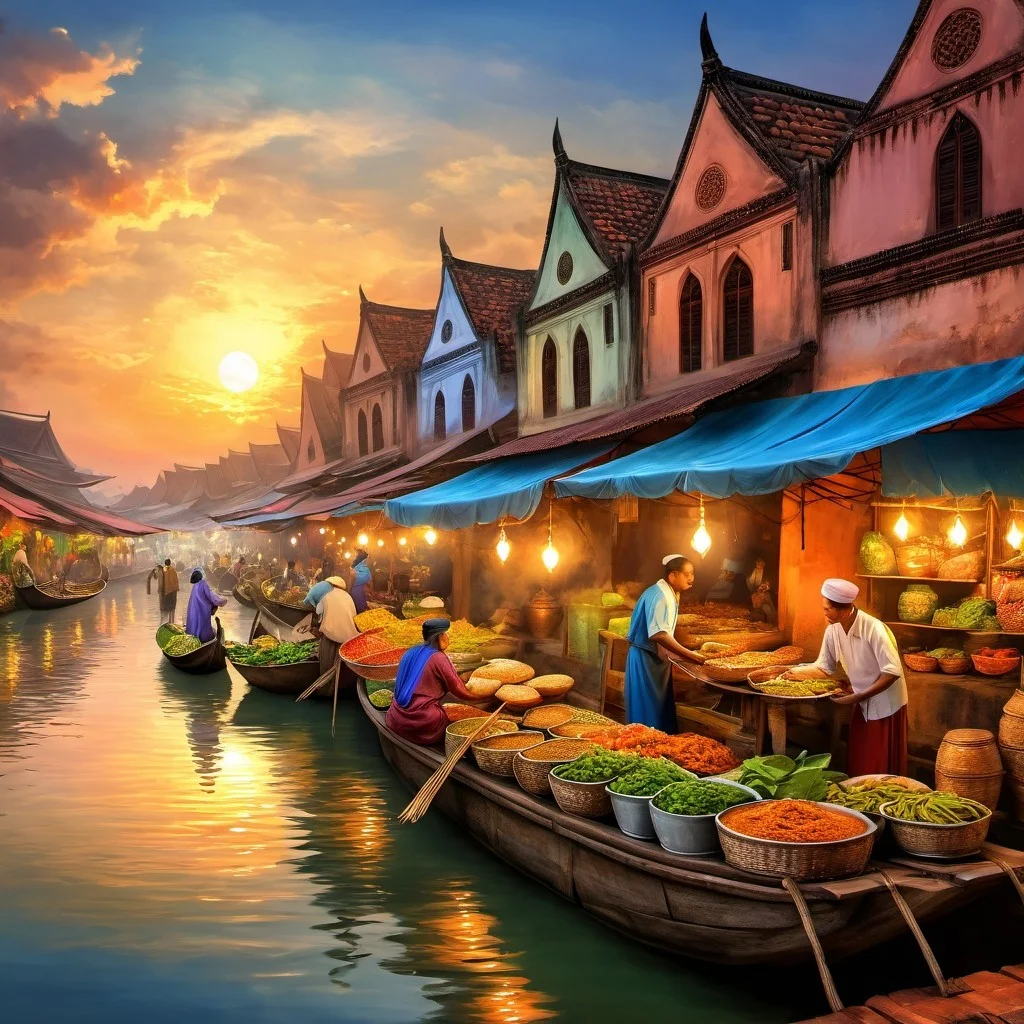
The Malay style of cuisine has, over time, absorbed influences from various Indian, Chinese, and Arab styles. These foods have enriched the flavours and techniques of Malay cooking, resulting in a diverse and delicious type of food.
It’s characterised by its flavours, complex spices, and fresh ingredients. Rice is a staple, served with a variety of curries and soups. One of the most iconic dishes is Nasi Lemak, a fragrant coconut rice dish topped with sambal chilli paste, fried Ikan Bilis (small fried fish), peanuts, and a hard-boiled egg. Another popular dish is Rendang, a rich and spicy meat stew that’s slow-cooked until tender.
Sambal, a chilli paste, is an essential ingredient in many Malay dishes. It can be made with a variety of chilli peppers, including bird’s eye chillies and Belacan (a fermented shrimp paste that adds a unique salty flavour). Sambal is not just a condiment; it’s a cultural symbol.
While Malay, Indian, and Chinese cuisines share some similarities, they’ve distinct characteristics. Malay cuisine is spicier and more fragrant, with a greater emphasis on coconut milk and chilli peppers. Indian cuisine is known for its use of spices like cumin, coriander, and turmeric. Chinese cuisine, with its focus on fresh ingredients and flavours, is more subtle in comparison.
Chinese Cuisine in Malaysia
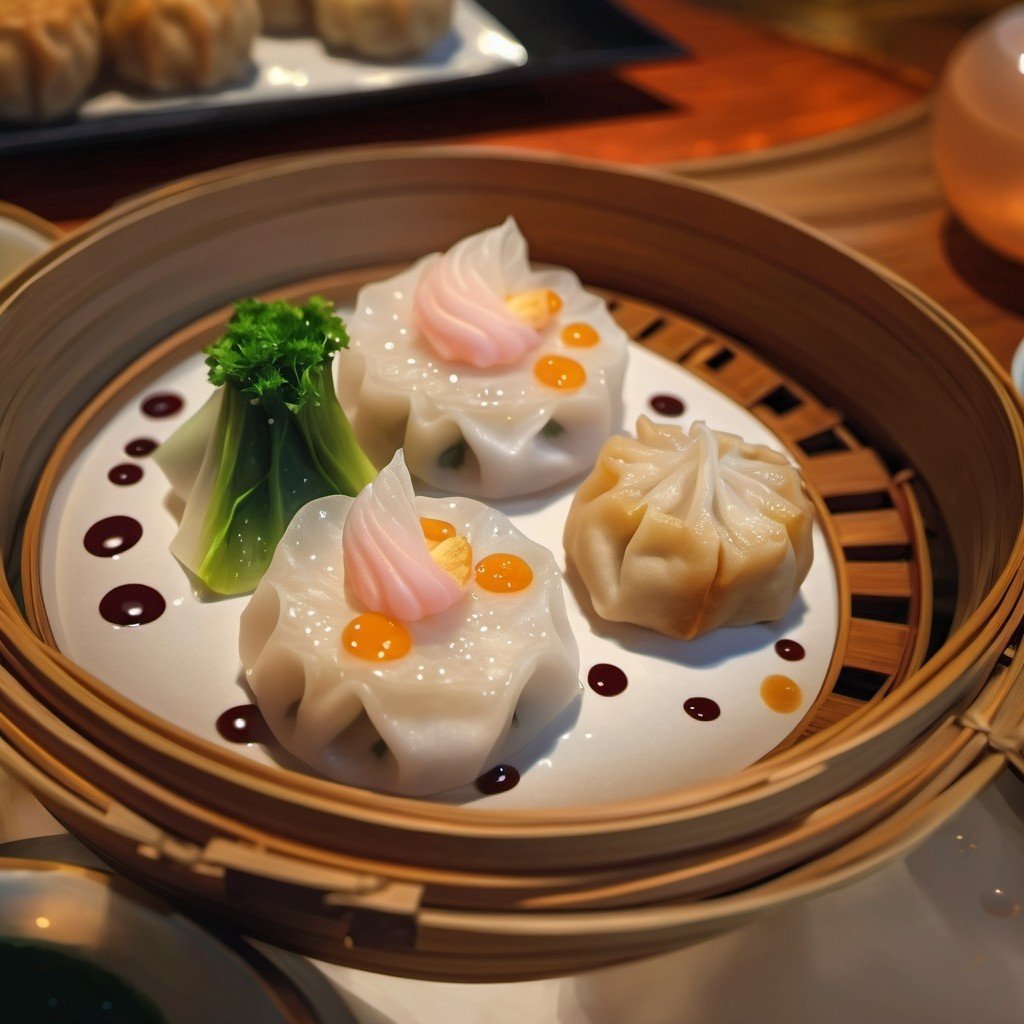
Nowhere is Malaysian food heritage more evident than in the Chinese food scene. This range of flavours, traditions, and techniques has captured the hearts and taste buds of both locals and tourists alike.
The roots of Chinese cuisine in Malaysia trace back to the influx of Chinese immigrants in the 18th and 19th centuries. These immigrants brought with them a culinary heritage characterised by subtle flavours, intricate cooking methods, and a love for fresh ingredients. These culinary traditions were adapted to local tastes, giving birth to what we now know as Malaysian-Chinese cuisine.
One of the key factors driving the popularity of Chinese food in Malaysia is its importance during cultural celebrations. Chinese New Year and the Mooncake Festival are synonymous with feasting. Families gathering are laden with tables of an array of tasty food dishes. For the Chinese, these occasions strengthen familial bonds and reinforce cultural identity.
Symphony of Oriental Flavours
Malaysian Chinese cuisine is a wide-ranging mix of flavours. Each part of Malaysia has its style, influenced by different Chinese provinces. Cantonese, Hokkien, Teochew, Hainanese, and Hakka are just a few of the culinary traditions that have shaped Malaysian Chinese cuisine.
One dish of merit is Bak Kut Teh, a hearty pork soup with a rich broth and a medley of herbs and spices. This dish, believed to have originated in Fujian province, has become a beloved staple in Malaysia and even Thailand.
World Famous Dishes
Another popular dish is Char Kway Teow, which is similar to the Thai noodles Pad See Iew. Among the differences, the Malaysian version is spicier and has blood cockles, while the Thai version is sweeter. This dish, often considered the national dish of Penang, is a symphony of oriental flavours, textures, and smells.
Then we have Dim Sum – the Sunday morning eat-out breakfast for countless Chinese all over the world.
Hainanese Chicken Rice, with its tender chicken and fragrant rice, is another beloved dish with roots in Hainan Island, China. In Malaysia, it’s served with a chilli and ginger-garlic sauce, adding a touch of the local.
Chinese food in Malaysia satisfies diverse palates. If you’re savouring a bowl of steaming hot noodles or indulging in a decadent dim sum feast, Chinese cuisine in Malaysia is sure to leave a lasting impression.
Malaysia Heritage Places to Visit

In Malaysia, there’s no shortage of places to visit for the discerning traveller. The award of UNESCO World Heritage Site is not one handed out lightly, but Malaysia has several UNESCO sites for historical heritage and natural heritage.
Historical Melaka City – UNESCO World Heritage Site
Melaka is the place where Malaysian history truly begins. It’s a delightful mix of cultures, cuisines, and colonial architecture. It is the birthplace of Peranakan culture. During its many incarnations, it’s been heavily influenced by the Chinese, Portuguese, Dutch and British. traders.
Melaka River Cruise
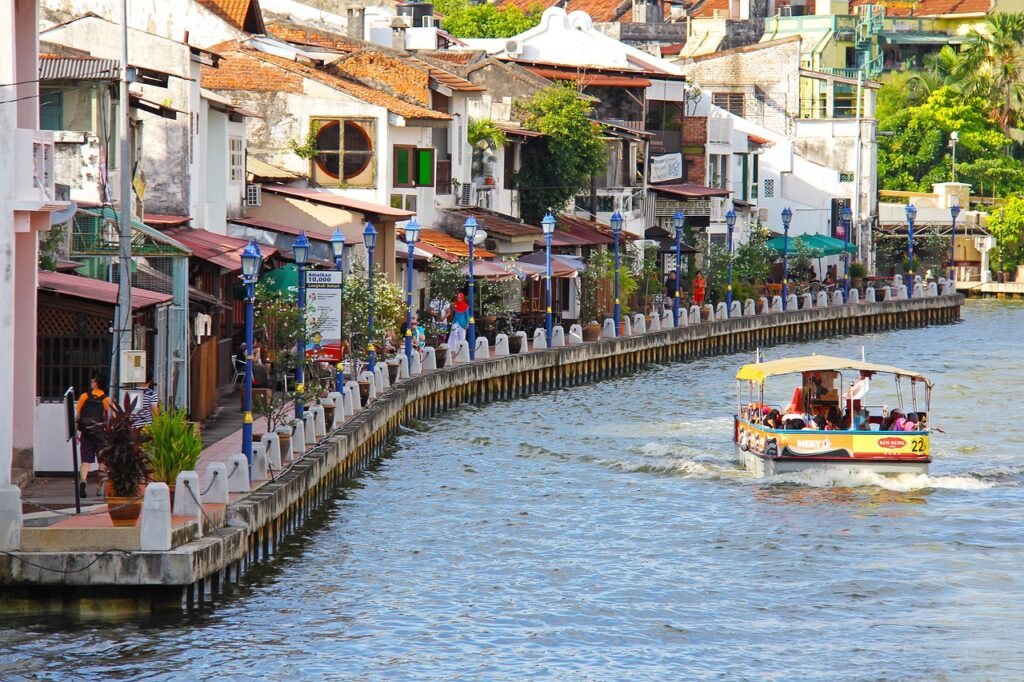
There’s something quite amazing about cruising down a river, particularly one that’s witnessed centuries of history. The Melaka River Cruise offers just such an experience.
It passes beneath ornate bridges. It sails past towering spires of old churches. You’ll spot the intricate details of centuries-old Peranakan-style shophouses. On a river cruise, you’ll learn of the Portuguese, the Dutch, and the British, each of whom left their mark on this historic city. You’ll see remnants of their fortifications, their churches, and their administrative buildings. It’s a peaceful experience and the perfect way to see the city’s true charm.
Baba & Nonya Heritage Museum
The Baba Nyonya Heritage Museum showcases a world where Chinese and Malay cultures intertwine. Peranakans were the descendants of Chinese immigrants who settled in Melaka centuries ago. They adopted Malay customs and language while preserving their Chinese heritage, creating a distinct hybrid demographic.
Walking through the museum’s rooms, every detail speaks to the Baba Nyonya’s love of luxury. View the exquisite embroidery, the fanciful jewellery, and the lavish textiles. Learn all about their traditions, beliefs, and culinary delights. But beyond the material culture, the museum tells a story of the early multiculturalism of the Malaysian people.
Jonker Street
Jonker Street is the pulsating heart of Malacca. By day, it’s a sleepy street, lined with antique shops, art galleries, and traditional Chinese medicine halls. But as the sun sets, Jonker Street comes alive. The street transforms into a busy night market.
Sample a wide range of local delicacies, from satay skewers to char kway teow. Browse through the stalls, and haggle over the price of antique trinkets. If you’re lucky, you may catch a glimpse of a traditional Chinese opera. Jonker Street is a living, breathing part of Malacca’s soul. And it’s a place that’ll leave you with a lasting impression.
George Town, Penang – UNESCO World Heritage Site
The UNESCO Heritage town of George Town in Penang is a city of street art, coffee shops, clan houses, craft fairs and street markets. Its old buildings on Armenian Street, once worn, have come to life due to the tireless reconstruction efforts of the Penangites. Visit the clan jetties and appreciate how Chinese immigrants were organised along clan lines. Or perhaps visit the dazzling Khoo Kongsi for a peek into the history of the mighty Khoo clan.
Let’s not forget Gurney Drive. It is one of the best shopping spots in Penang, and probably one of the most impressive hangout spots when you aren’t investigating all those heritage landmarks.
Peranakan Mansion
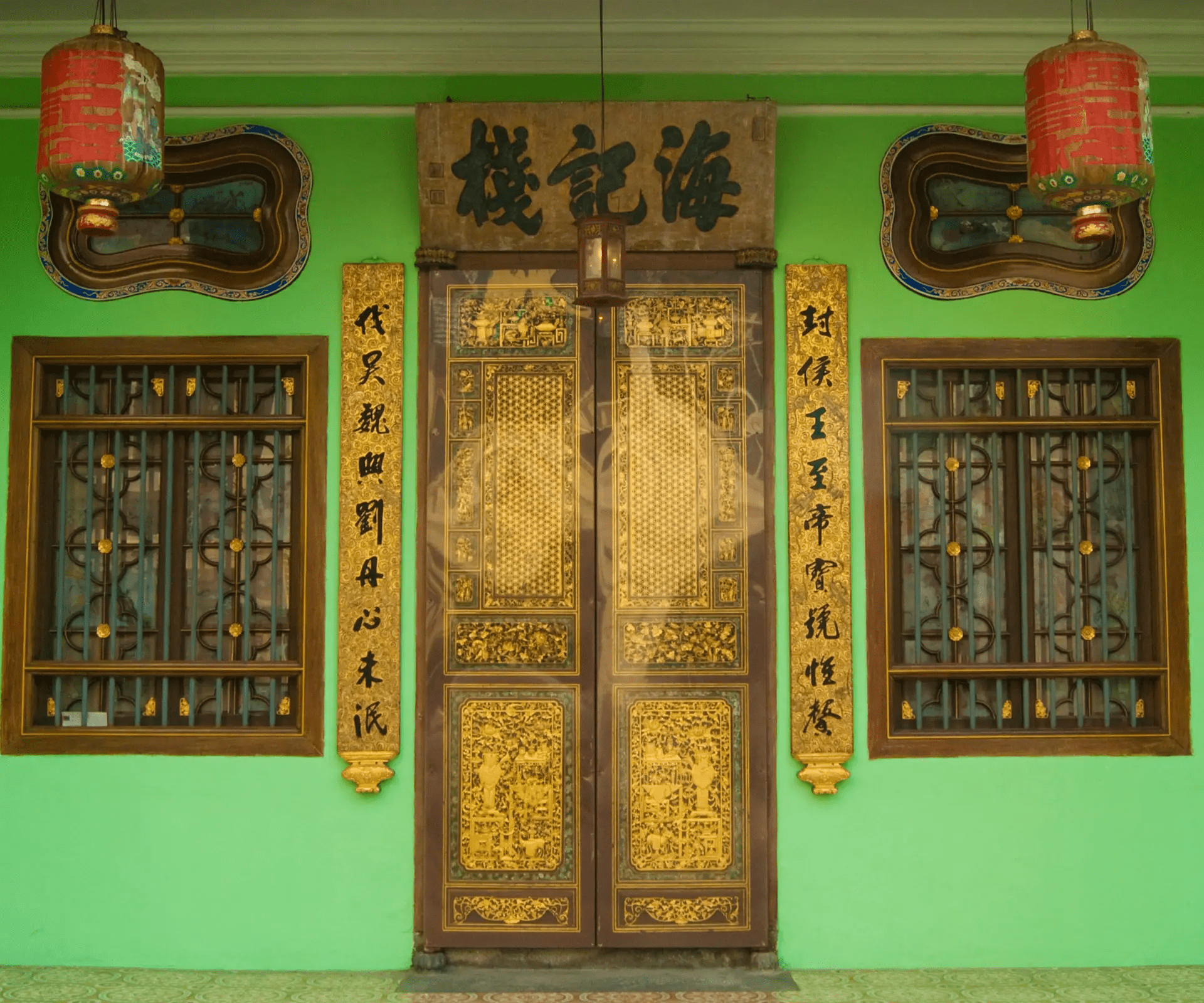
The Peranakan Mansion is a splendid green building from the outside. And inside, it’s like travelling back to the time of the opulent owner, Chung Keng Quee. The mansion is a treasure trove of all things Peranakan.
One of the most striking features of the mansion is its collection of antique furniture. There are towering armoires, carved chairs, and imposing four-poster beds, all made from precious woods like rosewood and teak.
Kek Lok Si

Kek Lok Si, the “Temple of Supreme Bliss”, is a famous monument to Buddhist devotion in Penang. It’s where dragons wind their way up walls, and giant Buddhas gaze down from the celestial heavens. High in the hills above Georgetown, in Ayer Itam, this amazing complex defies both gravity and good taste.
The temple’s centrepiece is a towering pagoda of gold leaf and intricate carvings. Walk around the grounds, and you’ll come across mythical creatures – lions, dragons, and phoenixes – all vying for your attention. There’s also a huge statue of Kuan Yin, the Goddess of Mercy. As a bit of a celebrity, Penangite pilgrims flock to the temple to worship her and make their Buddhist offerings.
You’ll find incense smoke swirling through the air, hear the chanting of monks, and the occasional hawker trying to sell you a lucky charm. Despite the commercialism, there’s an undeniable sense of peace and tranquillity at this most stunning of temples.
Penang Hill
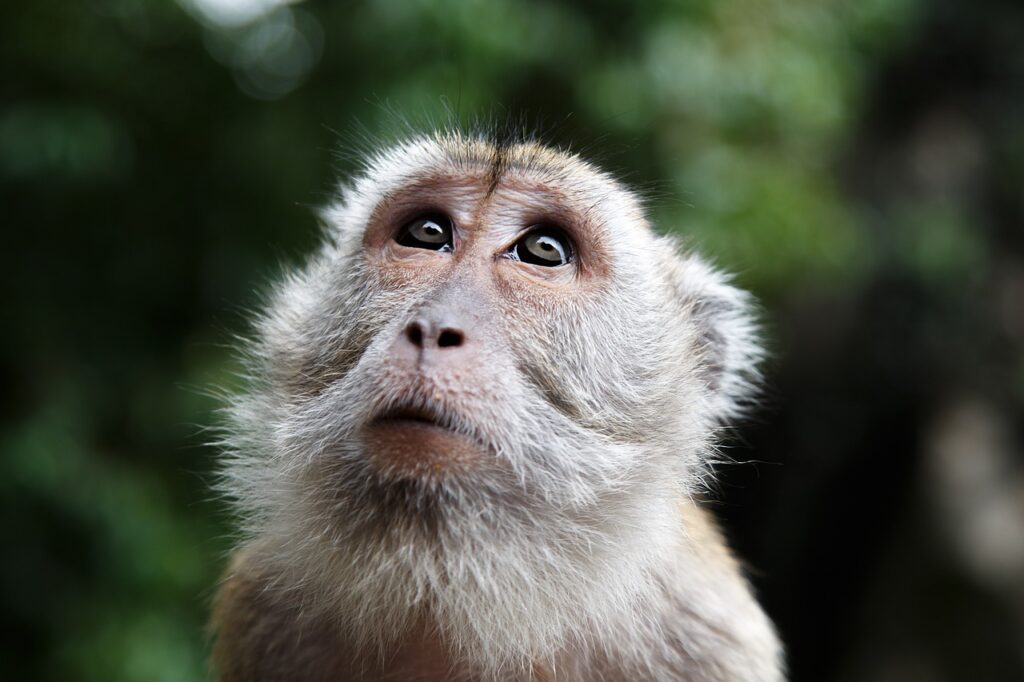
Penang Hill rises above the city. To get there, you must board a creaky old funicular train (or walk a very long walk indeed). At the top, you’re greeted by a strange mix of colonial bungalows, souvenir shops, and eateries. Not forgetting spectacular views of Penang down below.
There’s a certain charm to Penang Hill. The air is cool and crisp, and the hiking trails are a great way to work off all that laksa! You can even spot wild monkeys, though they’re more interested in stealing snacks than striking up a conversation.
If you’re looking for peace, head to the peak. There’s a small temple there. Or, if you prefer a bit more excitement, try your hand at the canopy walk, a thrilling adventure that takes you soaring through the treetops.
Batu Caves
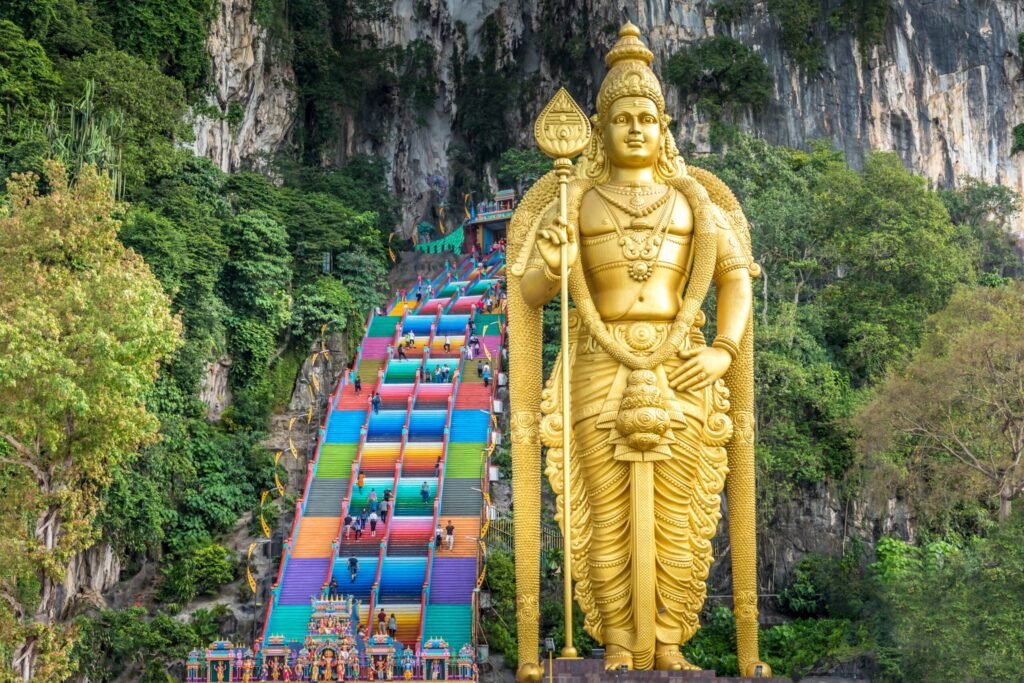
The Batu Caves, a limestone hilltop shrine outside of Kuala Lumpur, is an undeniably interesting place for the heritage tourist. Here, Hindu devotion meets Chinese feng shui with a dash of good old-fashioned touristy excess.
The caves are a geological wonder. A maze of caverns and chambers carved out of the limestone over millions of years. But what humans have done to the place makes it special. The main attraction is a 272-step staircase leading up to a Hindu temple complex. This staircase is a mesmerising haze of colour, adorned with statues of Hindu gods and demons. The caves play a major role in the must-see festival of Thaipusam.
Sultan Abdul Samad Building
This majestic structure stands as one of the most iconic symbols of Malaysia’s history and cultural heritage. This landmark is a must for any traveller seeking to immerse themselves in the city’s past and present.
The building’s striking blend of Neo-Mughal and Moorish architectural styles creates a visually stunning spectacle. Its imposing clock tower, reminiscent of Big Ben, dominates the skyline and adds to its grandeur.
Cameron Highlands
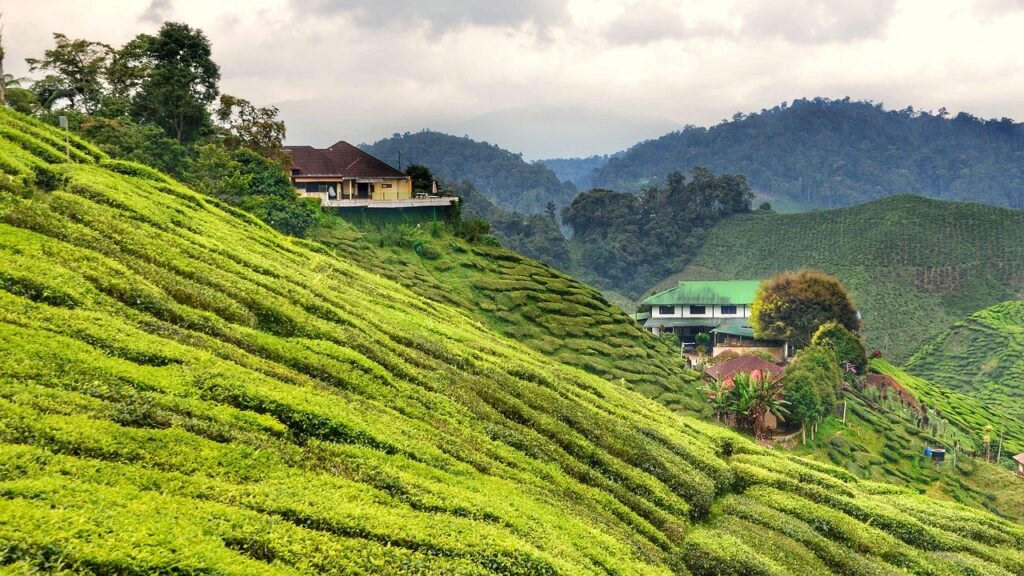
The Cameron Highlands in the mist-shrouded mountains of Malaysia is a place of unexpected tranquillity. It’s a world away from the cities and tropical beaches that spring to mind when considering Malaysia.
The British discovered this retreat in the early 20th century. They were so enchanted by its beauty and temperate climate that they transformed it into a hill station. The ideal place to escape the sweltering heat of the lowlands. Today, the Cameron Highlands remains a popular getaway for nature and heritage lovers alike.
Taman Negara
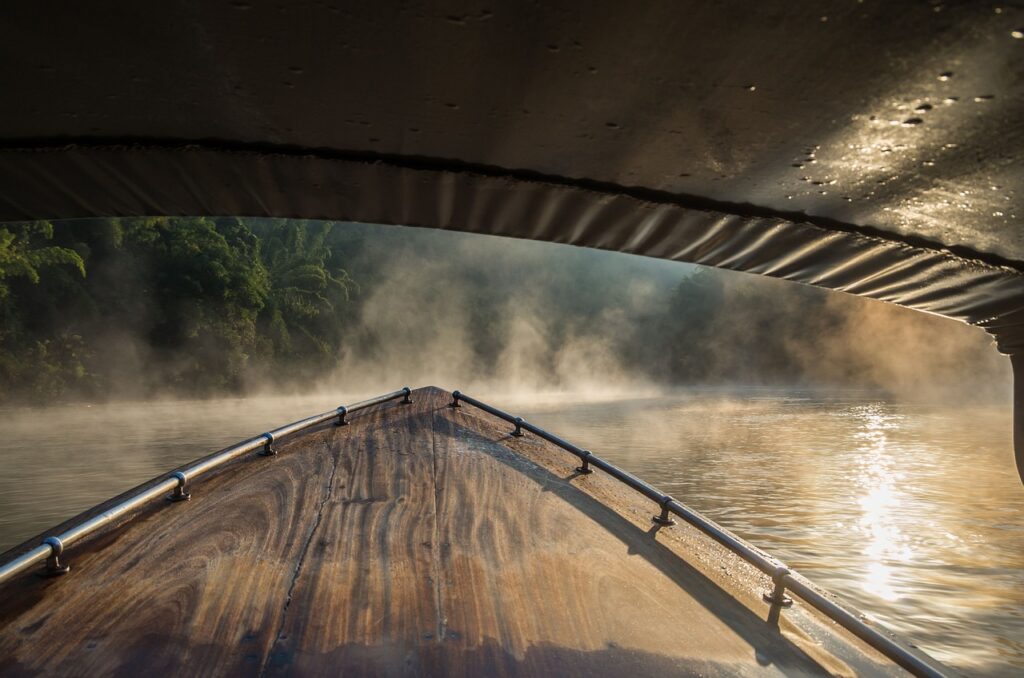
Taman Negara is an untamed primordial rainforest. And, it’s still the home of Malaysia’s people – the Orang Asli. This rainforest, one of the oldest on Earth, has been around for 130 million years. Towering trees, draped in thick vines, create a canopy that filters the sunlight into swirling patterns on the forest floor.
Adventuring deep into this wooded labyrinth, you’ll hear the calls of unseen creatures, from the cry of the gibbon to the rhythmic drumming of the hornbill. This is a natural wonder of the world, and for nature lovers, a truly once-in-a-lifetime adventure.
Perhentian Islands

The Perhentian Islands, off the northeastern coast of Peninsular Malaysia, are a paradise that’ll leave you breathless. These islands, with crystal-clear waters, white sands, and coral reefs, are a dream come true for nature lovers. There are no cars, no traffic, and no worries here. Just the lapping of waves, the chirping of birds, and the occasional rustling of leaves. On these islands, you’ll have little option but to truly unwind and reconnect with nature.
Go snorkelling or dive amongst the coral reefs, kayak in mangrove forests, or just lounge all day. And after all that, retire to a cosy bungalow, where you can fall asleep to the sound of the waves.
Malaysia Heritage Hospitality

Malaysia is a riveting adventure for the discerning traveller. From old Melaka to the colonial charm of Penang’s George Town, the country’s past is etched into its present. Striking mosques, mysterious Hindu temples, and Buddhist pagodas each represent the religious tolerance that’s shaped Malaysia’s identity over the centuries.
Visit the night markets, where the smells of exotic spices fill the air. Malaysia’s food heritage is a mix of Malay, Chinese and Indian influences. And the best part? It’s all ridiculously cheap. You can feast like a king for a pittance, sampling street food wonders that would cost a fortune back home.
But what truly sets Malaysia apart is its people. The Malaysians are among the warmest, friendliest folk you’ll ever meet. They’ll greet you with a smile, offer directions without hesitation, and go out of their way to make you feel welcome. Their hospitality is legendary, and it’s a big part of what makes Malaysia such an amazing place to explore.
So, whether you’re a history buff, a foodie, or just someone looking for a good time, Malaysia has it all. It’s a country that’ll surprise you, enchant you, and leave you wanting more.
Malaysia Heritage FAQs
What is the defining characteristic of Malaysia’s heritage?
Malaysia’s heritage is characterised by its diverse mix of people, cultures, and foods, deeply rooted in a strong tradition of maritime trade that dates back to the early Hindu-Buddhist kingdom of Bujang Valley.
Who was a key figure in the early spread of Islam in the region?
Sultan Mudzafar Shah I of Kedah is noted as a key figure, as he was the first Malay ruler to convert from Hinduism, marking a significant turning point in the country’s religious history.
Who are the Peranakan Chinese (or Baba Nyonya)?
The Peranakan Chinese are a unique hybrid group that arose from the intermarriage between early Chinese settlers (who arrived, in part, during the Ming Dynasty expeditions led by Admiral Zheng He) and the local Malay population. They created a distinct culture, particularly prominent in Melaka and Penang.
How did Indian culture significantly influence Malaysia?
The Indian influence came in two major waves: early spread of Hinduism and Buddhism via traders and monks to kingdoms like Srivijaya, and a large influx during the British colonial era, when labourers from Tamil Nadu and Andhra Pradesh were brought in for plantations. This migration established Indian celebrations like Deepavali and Thaipusam as integral parts of Malaysian heritage.
Which two Malaysian cities are designated as UNESCO World Heritage Sites for their historical heritage?
Historical Melaka City and George Town, Penang, are both recognised as UNESCO World Heritage Sites, valued for their colonial architecture, cultural melting pot, and historic townscapes.
What is the cornerstone of Malaysia’s renowned culinary scene?
The cornerstone is the vibrant hawker stall culture, which provides affordable, delicious, and diverse cuisine that reflects the country’s blend of Malay, Chinese, Indian, Arab, and Portuguese food traditions.

